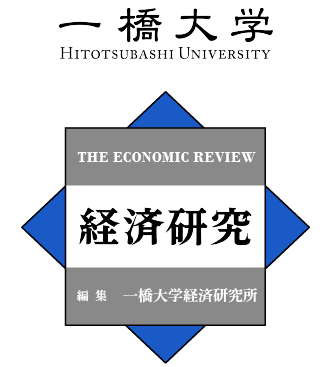Jul. 25, 2020
インド零細・小規模企業の企業家能力,インフォーマリティと選好の異質性
Entrepreneurship, Informality, and Preference Heterogeneity within Small and Micro Businesses in India
要旨Abstract
インドのデリー首都圏の零細・小規模企業家を対象に,伝統的な業種におけるインフォーマルセクター,同業種におけるフォーマルセクター,近代的な業種であるIT産業の企業家の選好と企業業績を分析した.ラボ実験によって計測した社会・リスク・時間選好と,信頼度に関する主観的調査結果を用い,3つのタイプの企業家の選好が異なることを明らかにした.イノベーションの採択や売上高といった企業業績を被説明変数とした重回帰分析からは,企業家の社会・リスク・時間選好の違いがパフォーマンスと相関しており,相関の強さや符号もセクター間で異なることが判明した.IT産業のような競争的環境においては,リスク愛好的企業家や,弾力的なリーダーシップを持つ企業家に率いられた企業のパフォーマンスが良好だった.これに対し,伝統的業種のフォーマル企業においては,IT産業でプラスに働く選好が逆方向に働くことがあり,政府の登録制度などが一種の既得権益を生み出して非競争的環境を作っている可能性が示唆された.
In this study, to deepen our understanding of the role of entrepreneurship in economic development, we examine individual and social preferences of small and micro entrepreneurs in Delhi, India, and their relationship with firm performance. We compare the following three sectors: traditional and informal manufacturing and service sectors, traditional and formal entrepreneurs in those sectors, and modern and formal entrepreneurs in the information technology (IT) industry. The analysis combines three types of data from the same entrepreneurs: (1) incentivized artefactual field experiments to elicit their inherent preferences; (2) non-incentivized trust questions following the General Social Survey style; and (3) structured panel surveys of entrepreneurs’ socioeconomic backgrounds, firm characteristics, and firm performance. The descriptive analysis reveals that the three types of entrepreneurs are significantly different in terms of trust levels and experimentally elicited preferences such as risk and time preferences, altruism, and leadership. We also find that across the three sectors, risk, time, and leadership preferences have heterogeneous relationships with firm performance measured by innovation, sales, and profit. In the competitive IT industry, firms that are led by risk-seeking entrepreneurs with flexibility to adjust their risk taking as a leader performed better. In contrast, in traditional industries, those preferences worked in the opposite direction, possibly reflecting market distortions.
書誌情報Bibliographic information
Vol. 69, No. 3, 2018 , pp. 242-275
HERMES-IR(一橋大学機関リポジトリ): https://hdl.handle.net/10086/29371
JEL Classification Codes: L26, O17, C93
